Who is it for?
This workflow is for marketers, sales teams, and local businesses who want to quickly collect leads (business name, phone, website, and email) from Google Maps and store them in Airtable.
You can use it for real estate agents, restaurants, therapists, or any local niche.
If you need a professional automation agency to build advanced lead generation systems like this, check out Vision IA's n8n automation services.
How it works
- Scrape Google Maps with Apify Google Maps Extractor.
- Clean and structure the data (name, address, phone, website).
- Visit each website and retrieve the raw HTML.
- Use GPT to extract the most relevant email from the site content.
- Save everything to Airtable for easy filtering and future outreach.
It works for any location or keyword – just adapt the input in Apify.
Requirements
Before running this workflow, you’ll need:
- ✅ Apify account (to use the Google Maps Extractor)
- ✅ OpenAI API key (for GPT email extraction)
- ✅ Airtable account & base with the following fields:
Business NameAddressWebsitePhone NumberEmailGoogle Maps URL
Airtable Structure
Your Airtable base should contain these columns:
Airtable Structure
| Title | Street | Website | Phone Number | URL | |
|---|---|---|---|---|---|
| Paris Real Estate Agency | 10 Rue de Rivoli, Paris | https://agency.fr | +33 1 23 45 67 | [email protected] | maps.google.com/... |
| Example Business 2 | 25 Avenue de l’Opéra | https://example.fr | +33 1 98 76 54 | [email protected] | maps.google.com/... |
| Example Business 3 | 8 Boulevard Haussmann | https://demo.fr | +33 1 11 22 33 | [email protected] | maps.google.com/... |
Error Handling
- Missing websites: If a business has no website, the flow skips the scraping step.
- No email found: GPT returns
Nullif no email is detected. - API rate limits: Add a
Waitnode between requests to avoid Apify/OpenAI throttling.

Now let’s take a detailed look at how to set up this automation, using real estate agencies in Paris as an example.
Step 1 – Launch the Google Maps Scraper
Start with a When clicking Execute workflow trigger to launch the flow manually.
Then, add an HTTP Request node with the method set to POST.
👉 Head over to Apify: Google Maps Extractor
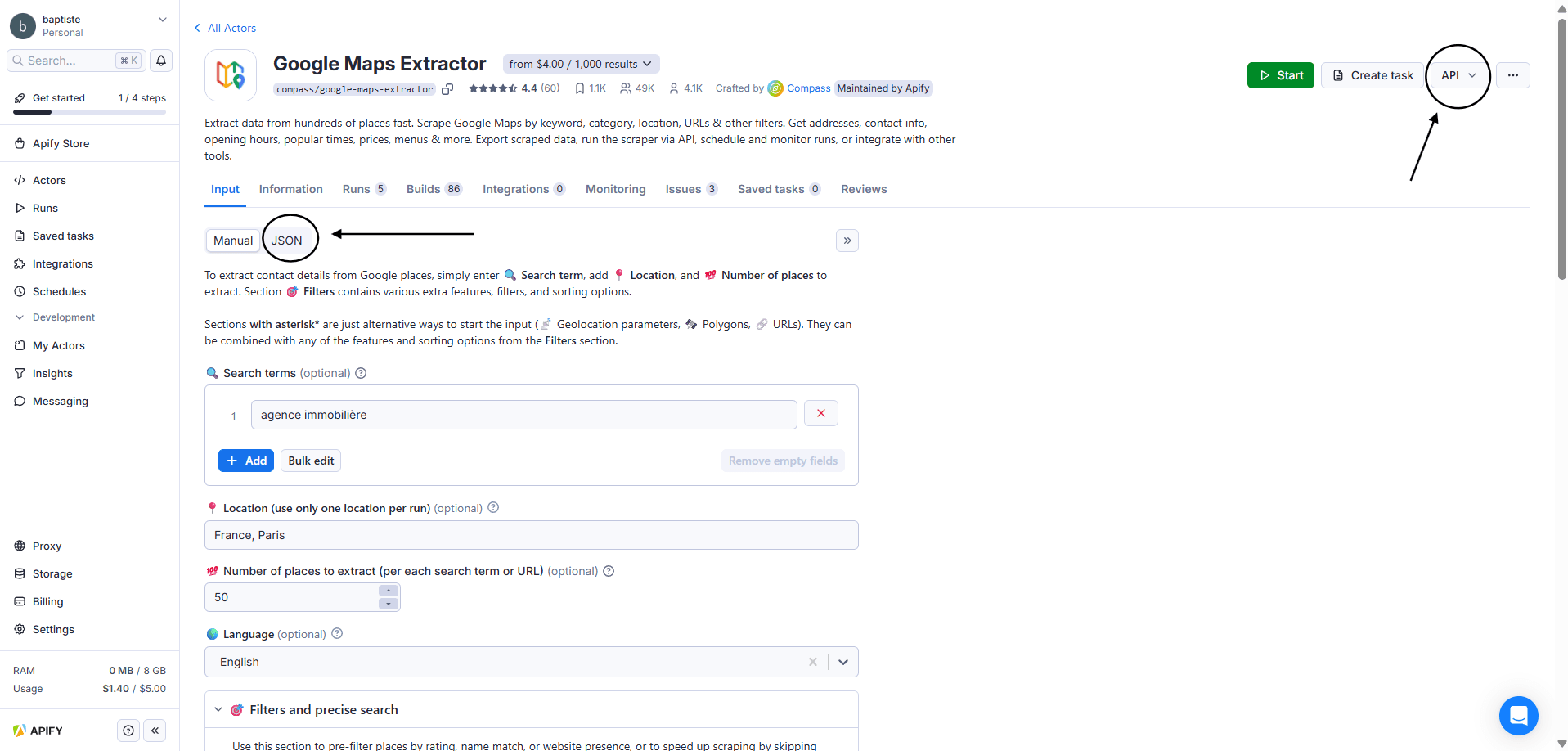
On the page: https://apify.com/compass/google-maps-extractor
Enter your business keyword (e.g., real estate agency, hairdresser, restaurant)
Set the location you want to target (e.g., Paris, France)
Choose how many results to fetch (e.g., 50)
Optionally, use filters (only places with a website, by category, etc.)
⚠️ No matter your industry, this works — just adapt the keyword and location.
Once everything is filled in:
Click Run to test.
Then, go to the top right → click on API.
Select the API endpoints tab.
Choose Run Actor synchronously and get dataset items.
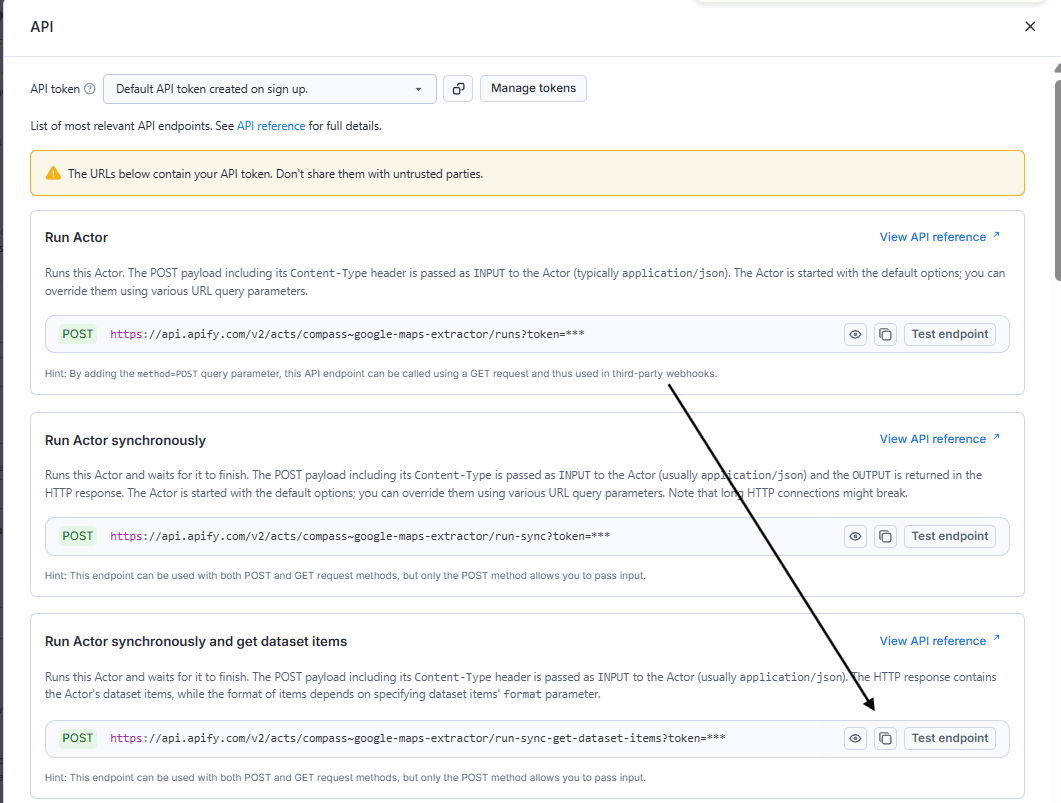
Copy the URL and paste it into your HTTP Request (in the URL field).
Then enable:
✅ Body Content Type → JSON
✅ Specify Body Using JSON`
Go back to Apify, click on the JSON tab, copy the entire code, and paste it into the JSON body field of your HTTP Request.
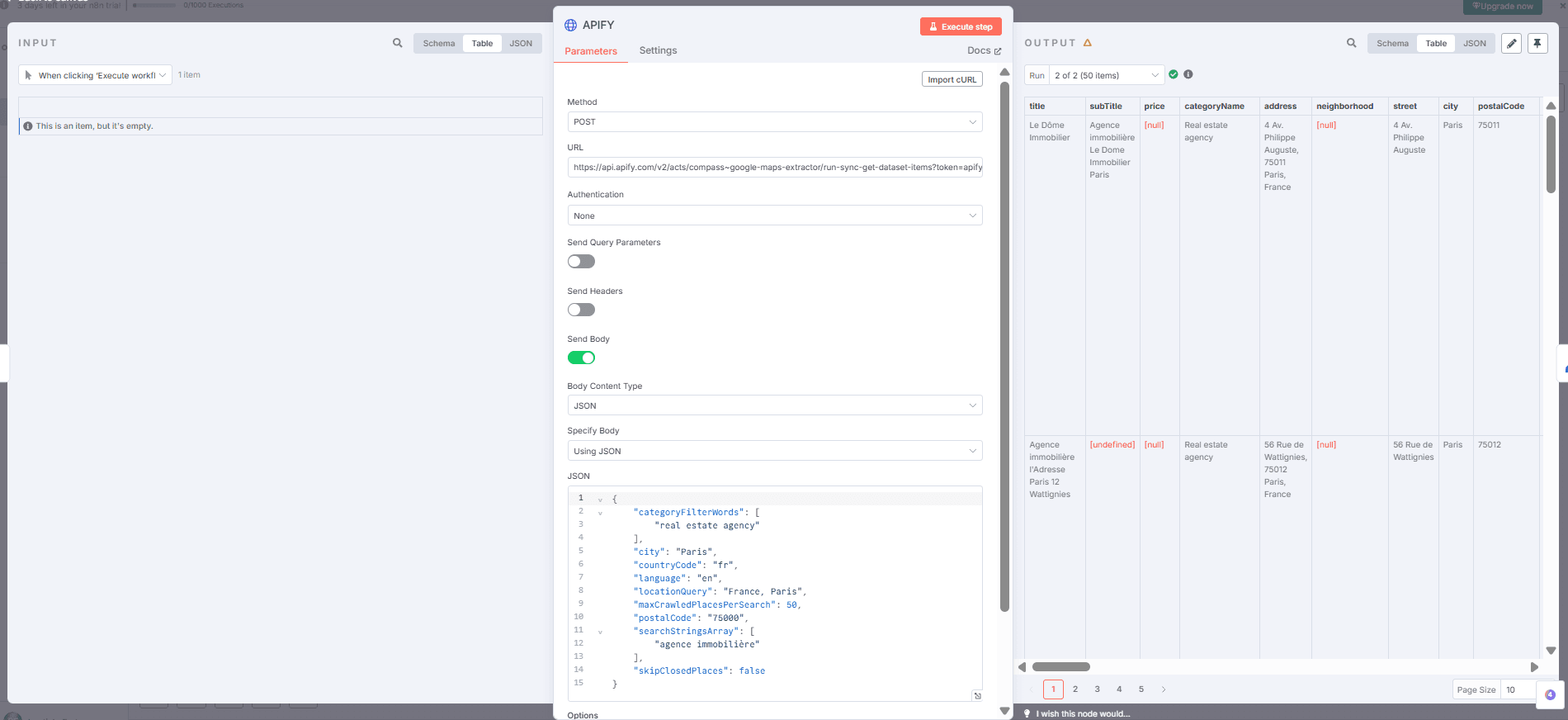
At this point, if you run your workflow, you should see a structured output similar to this:
title
subTitle
price
categoryName
address
neighborhood
street
city
postalCode
........
Step 2 – Clean and structure the data
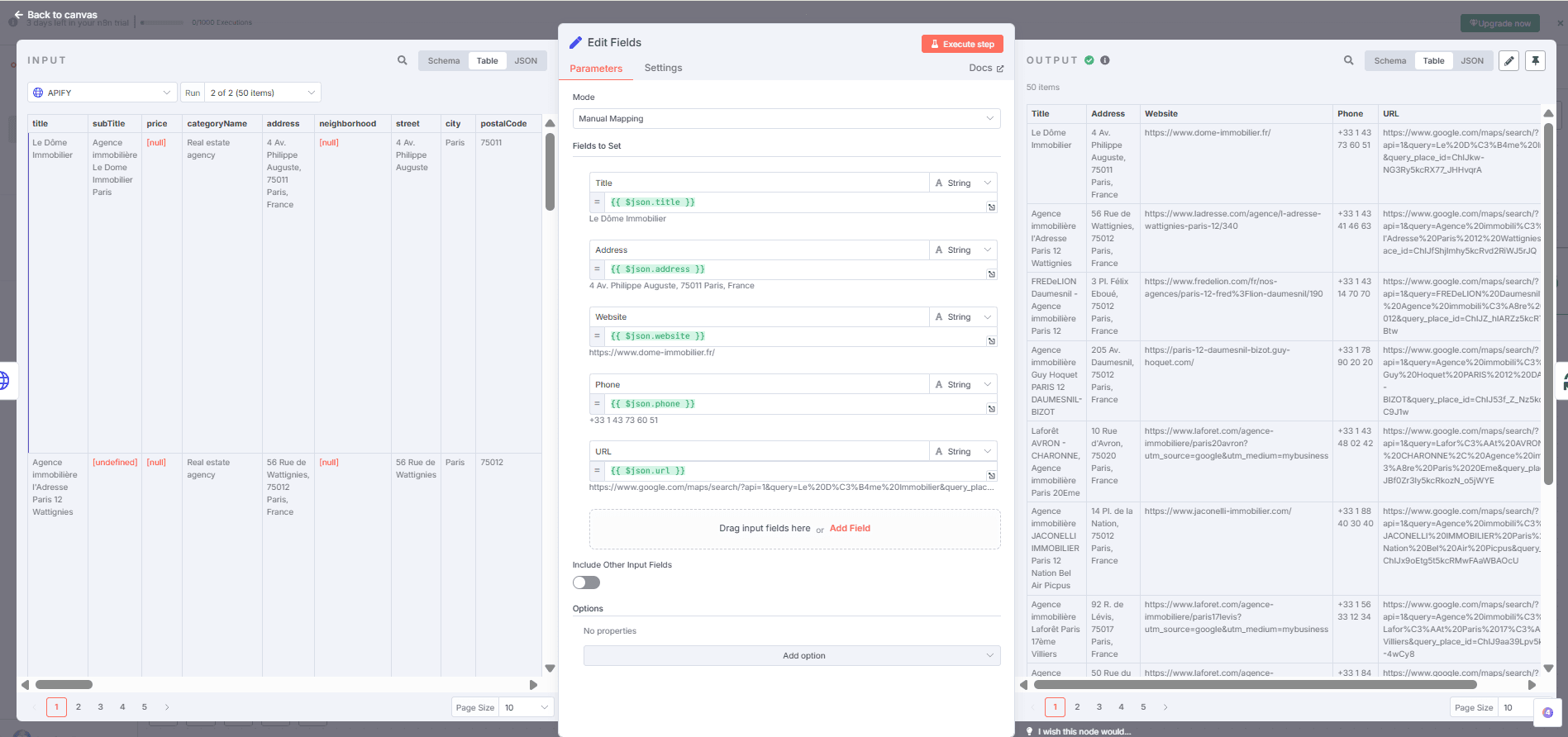
Once the raw data is fetched from Apify, we clean it up using the Edit Fields node.
In this step, we manually select and rename the fields we want to keep:
Title → {{ $json.title }}
Address → {{ $json.address }}
Website → {{ $json.website }}
Phone → {{ $json.phone }}
URL → {{ $json.url }}*
This node lets us keep only the essentials in a clean format, ready for the next steps.
On the right: a clear and usable table, easy to work with.
Step 3 – Loop Over Items
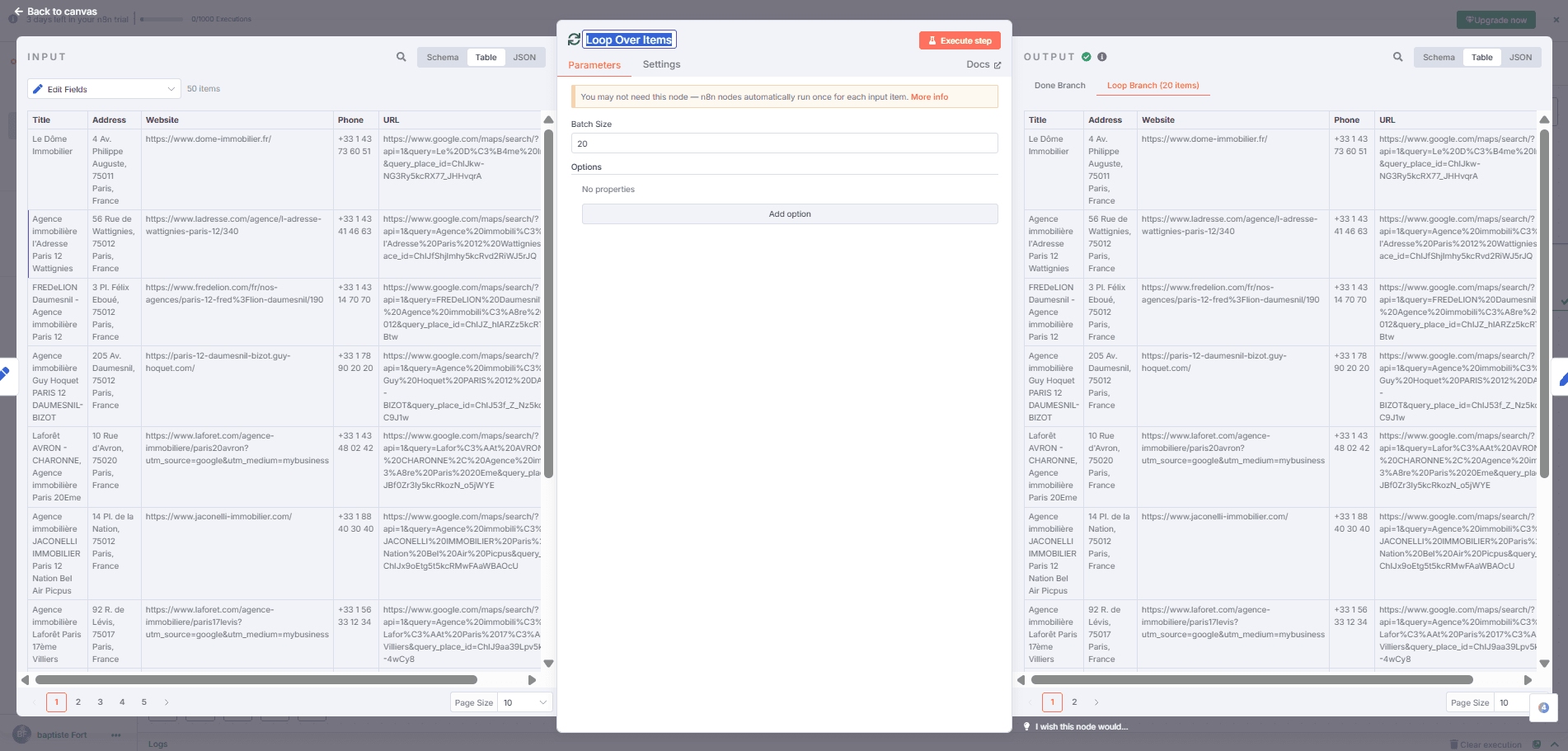
Now that our data is clean (see step 2), we’ll go through it item by item to handle each contact individually.
The Loop Over Items node does exactly that:
it takes each row from the table (each contact pulled from Apify) and runs the next steps on them, one by one.
👉 Just set a Batch Size of 20 (or more, depending on your needs).
Nothing tricky here, but this step is essential to keep the flow dynamic and scalable.
Step 4 – Edit Field (again)
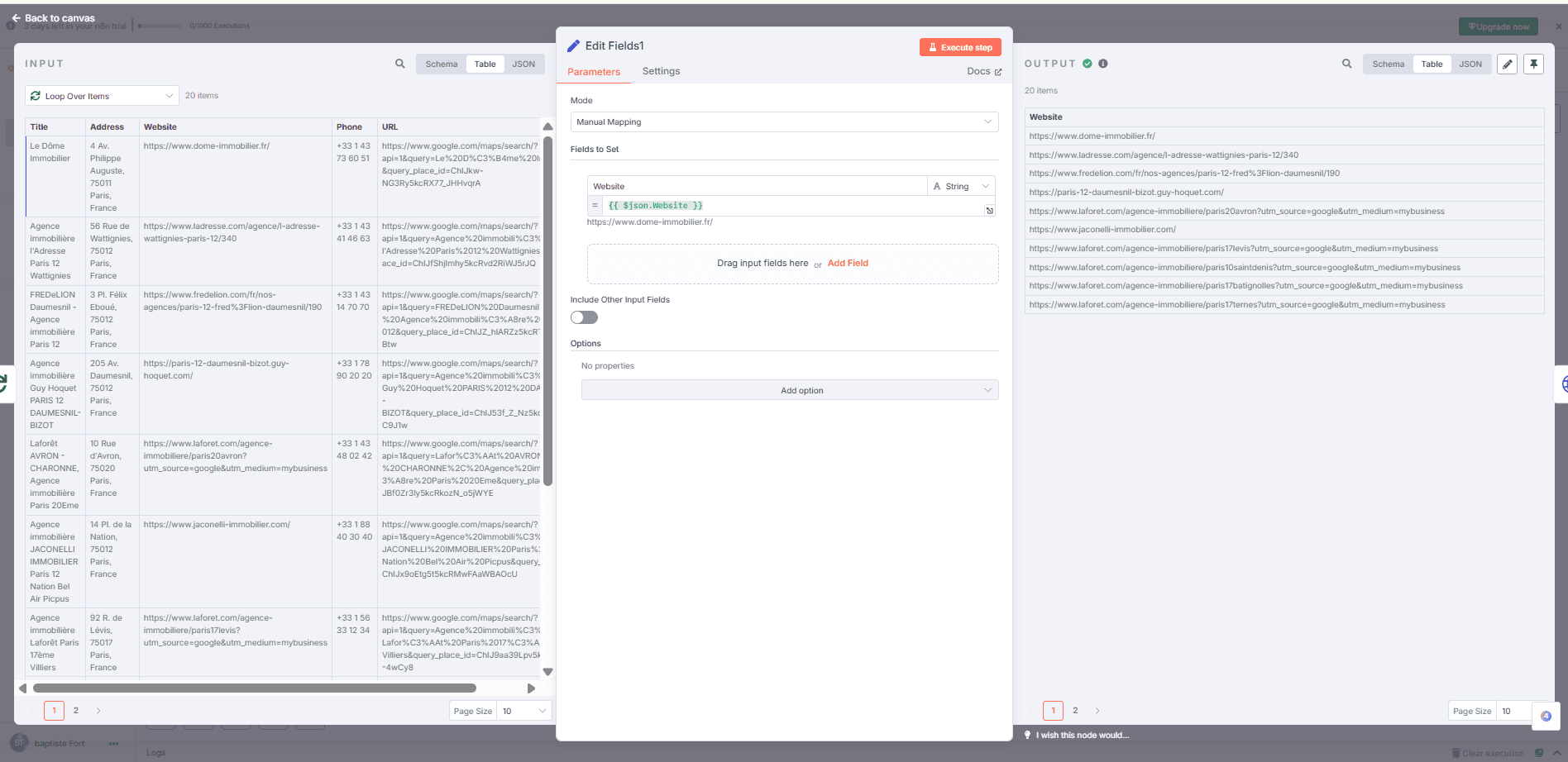
After looping through each contact one by one (thanks to Loop Over Items), we're refining the data a bit more.
This time, we only want to keep the website.
We use the Edit Fields node again, in Manual Mapping mode, with just:
Website → {{ $json.website }}
The result on the right? A clean list with only the URLs extracted from Google Maps.
🔧 This simple step helps isolate the websites so we can scrape them one by one in the next part of the flow.
Step 5 – Scrape Each Website with an HTTP Request
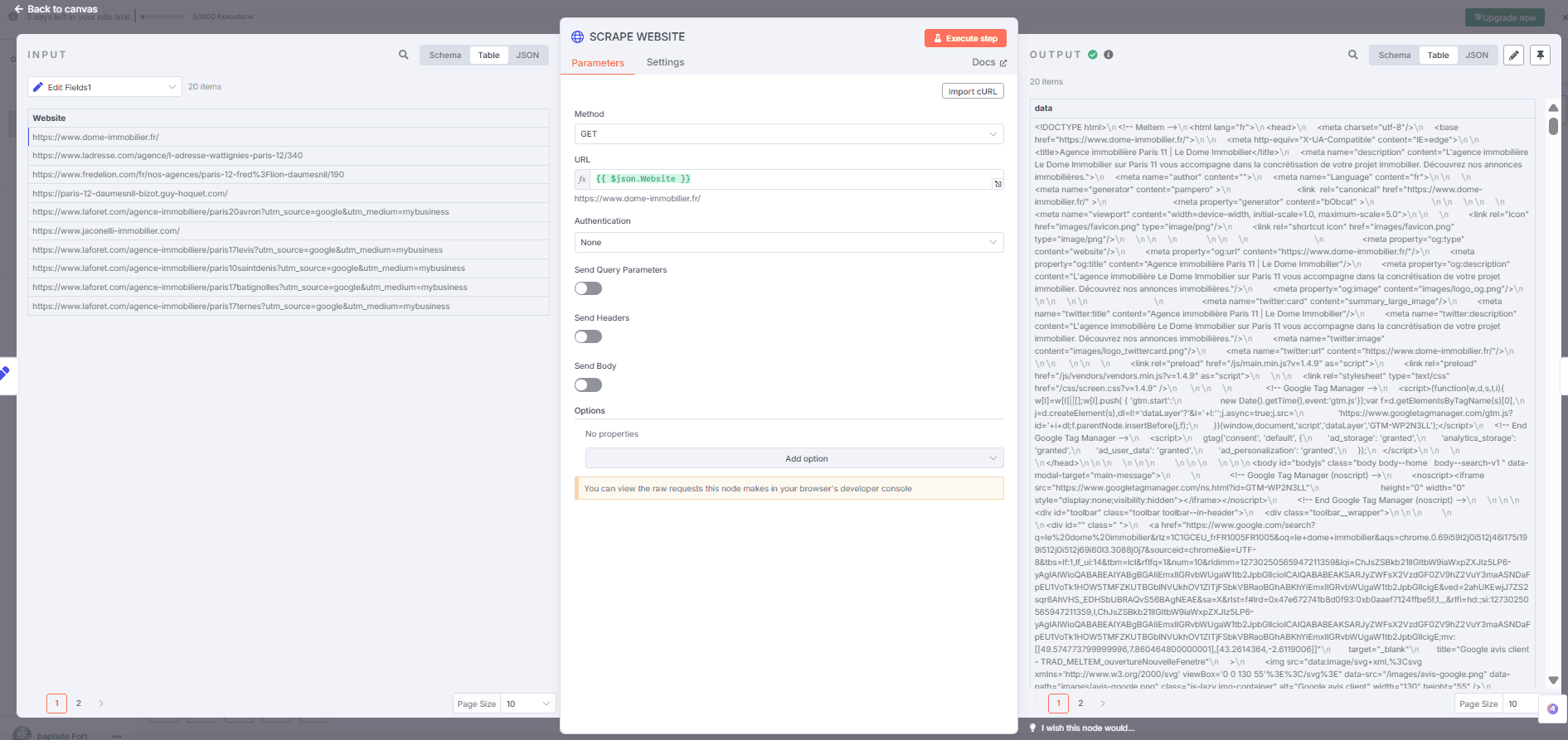
Let’s continue the flow: in the previous step, we isolated the websites into a clean list. Now, we’re going to send a request to each URL to fetch the content of the site.
➡️ To do this, we add an HTTP Request node, using the GET method, and set the URL as:
{{ $json.website }} This value comes from the previous Edit Fields input
This node will simply “visit” each website automatically and return the raw HTML code (as shown on the right).
📄 That’s the material we’ll use in the next step to extract email addresses (and any other useful info).
We’re not reading this code manually — we’ll scan through it line by line to detect patterns that matter to us.
This is a technical but crucial step: it’s how we turn a URL into real, usable data.
Step 6 – Extract the Email with GPT
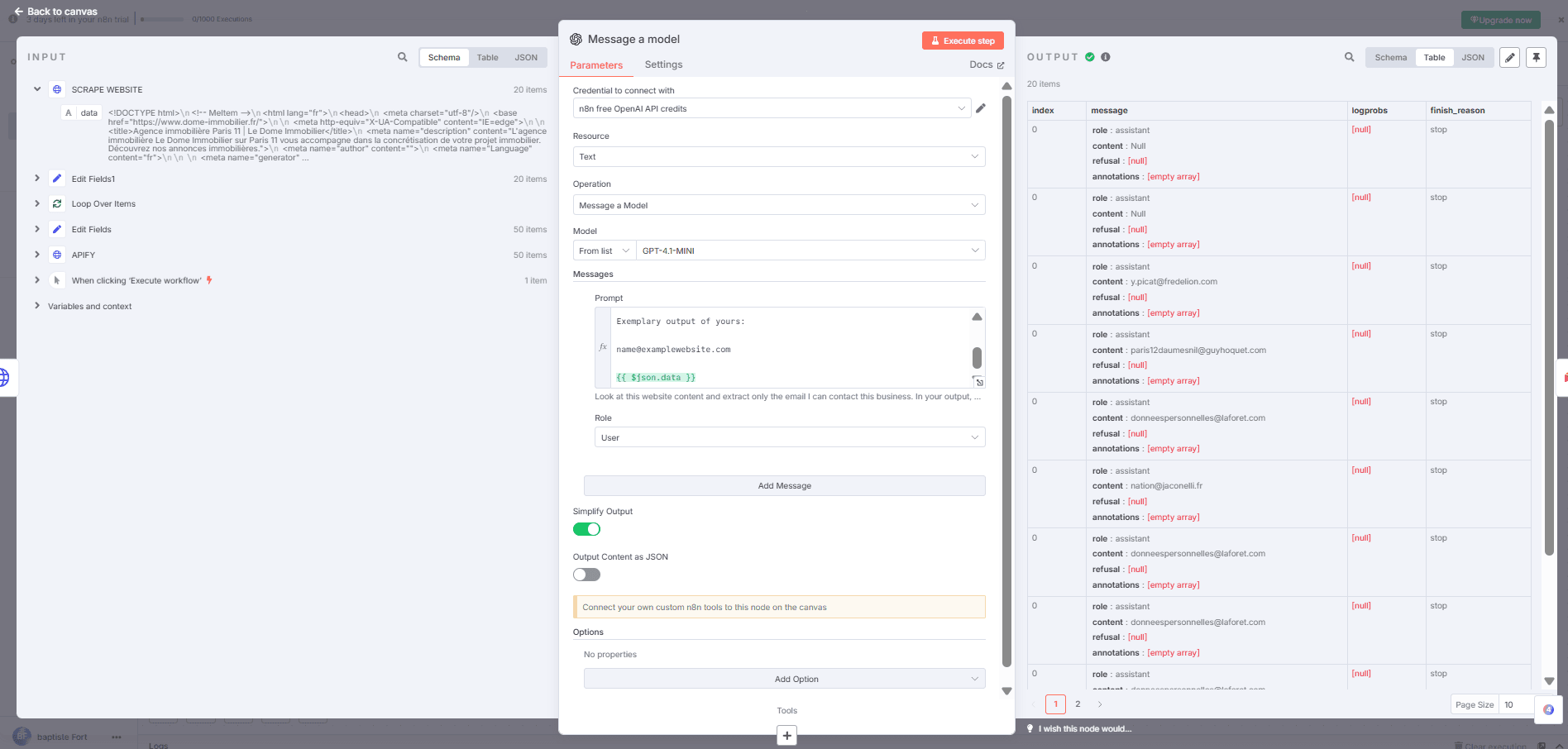
Now that we've retrieved all the raw HTML from the websites using the HTTP Request node, it's time to analyze it.
💡 Goal: detect the most relevant email address on each site (ideally the main contact or owner).
👉 To do that, we’ll use an OpenAI node (Message a Model). Here’s how to configure it:
⚙️ Key Parameters:
Model: GPT-4-1-MINI (or any GPT-4+ model available)
Operation: Message a Model
Resource: Text
Simplify Output: ON
Prompt (message you provide):
Look at this website content and extract only the email I can contact this business. In your output, provide only the email and nothing else. Ideally, this email should be of the business owner, so if you have 2 or more options, try for most authoritative one. If you don't find any email, output 'Null'.
Exemplary output of yours:
{{ $json.data }}
Step 7 – Save the Data in Airtable

Once we’ve collected everything — the business name, address, phone number, website…
and most importantly the email extracted via ChatGPT — we need to store all of this somewhere clean and organized.
👉 The best place in this workflow is Airtable.
📦 Why Airtable?
Because it allows you to:
Easily view and sort the leads you've scraped
Filter, tag, or enrich them later
And most importantly… reuse them in future automations
⚙️ What we're doing here
We add an Airtable → Create Record node to insert each lead into our database.
Inside this node, we manually map each field with the data collected in the previous steps:
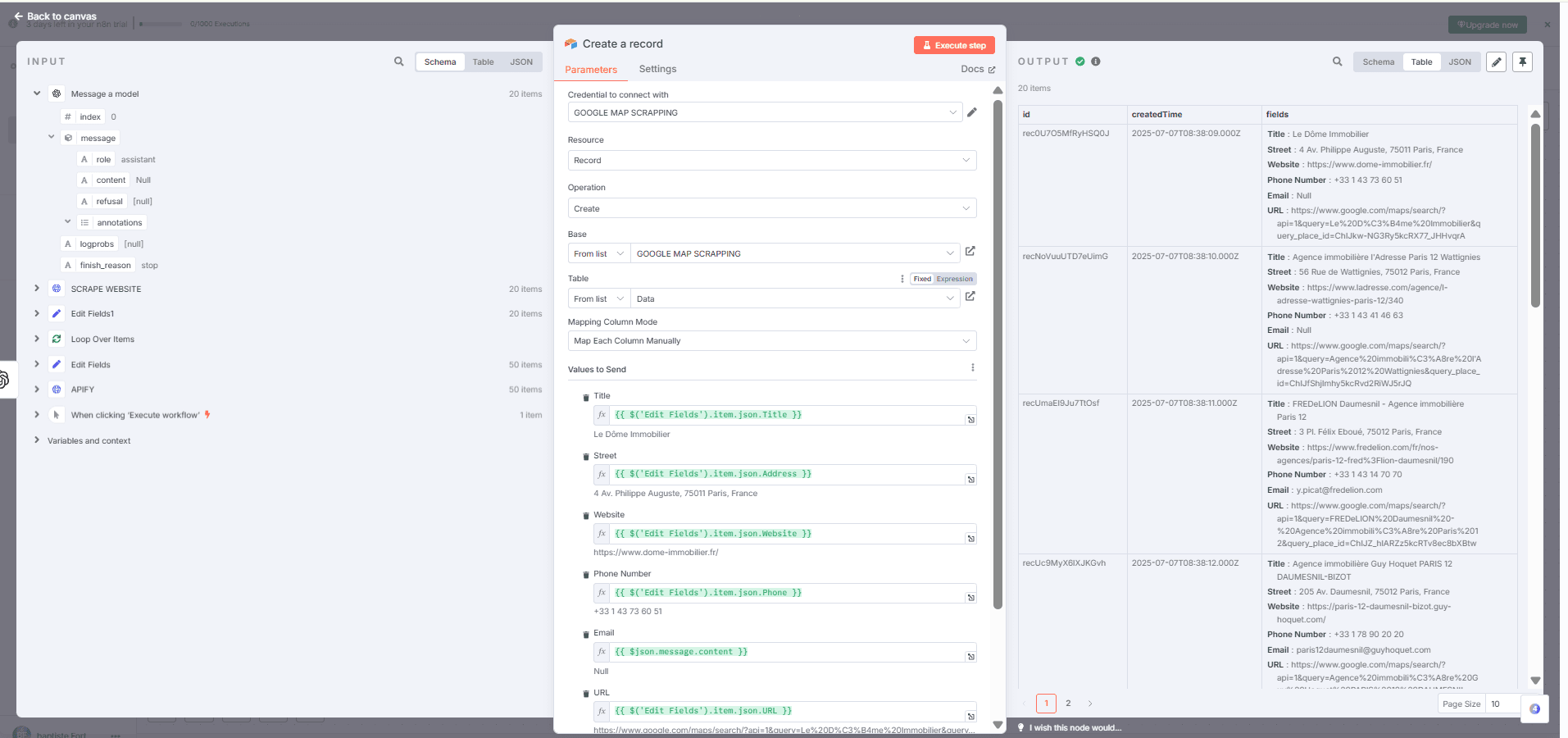
| Airtable Field | Description | Value from n8n |
|---|---|---|
Title |
Business name | {{ $('Edit Fields').item.json.Title }} |
Street |
Full address | {{ $('Edit Fields').item.json.Address }} |
Website |
Website URL | {{ $('Edit Fields').item.json.Website }} |
Phone Number |
Business phone number | {{ $('Edit Fields').item.json.Phone }} |
Email |
Email found by ChatGPT | {{ $json.message.content }} |
URL |
Google Maps listing link | {{ $('Edit Fields').item.json.URL }} |
🧠 Reminder: we’re keeping only clean, usable data — ready to be exported, analyzed, or used in cold outreach campaigns (email, CRM, enrichment, etc.).
➡️ And the best part? You can rerun this workflow automatically every week or month to keep collecting fresh leads 🔁.
Need Help Building an Automated Lead Generation System?
This workflow is a solid foundation for scraping Google Maps and extracting contact emails automatically. If you want to go further with AI-powered lead qualification, multi-channel outreach, and automatic follow-ups, our agency builds custom lead generation systems that run 24/7.
👉 Explore our lead generation automation services: Vision IA – Automated Lead Generation Agency
We help B2B companies and agencies scale their prospecting without hiring more people—everything from data collection to booking qualified meetings happens on autopilot.
Questions about this workflow or other automation solutions? Visit Vision IA or reach out for a free consultation.